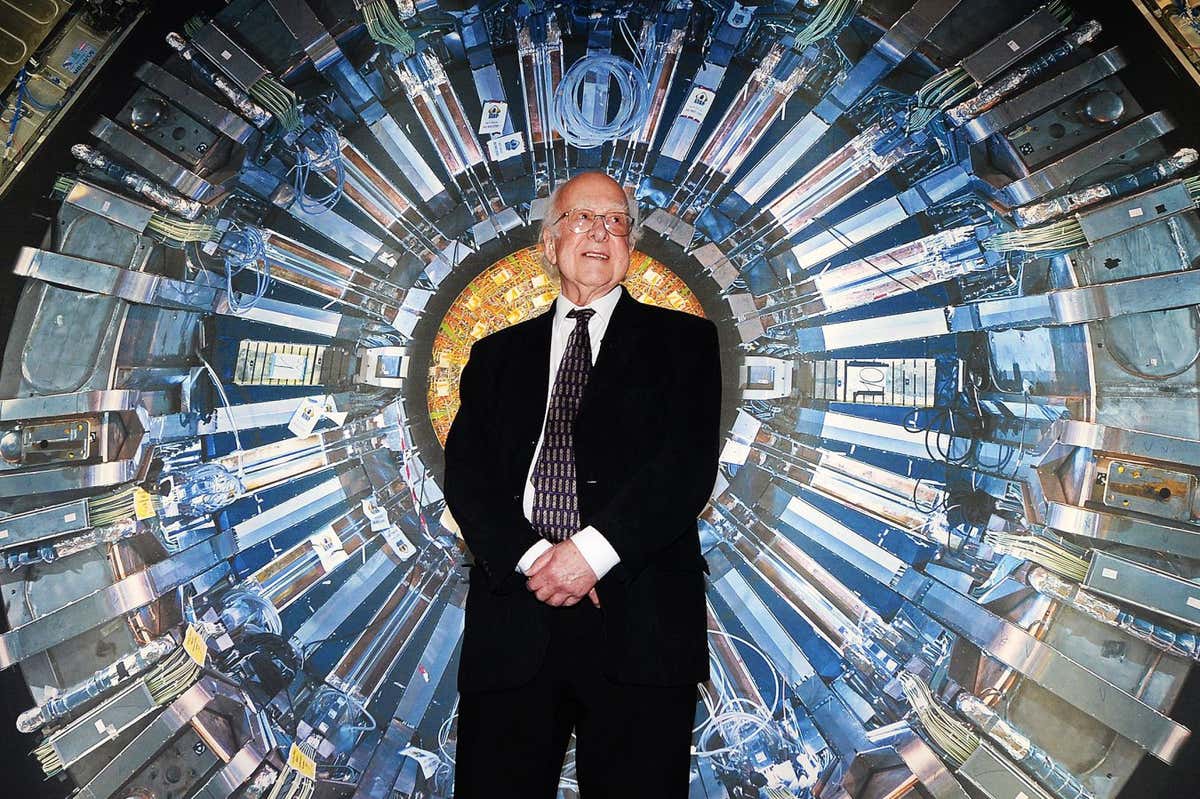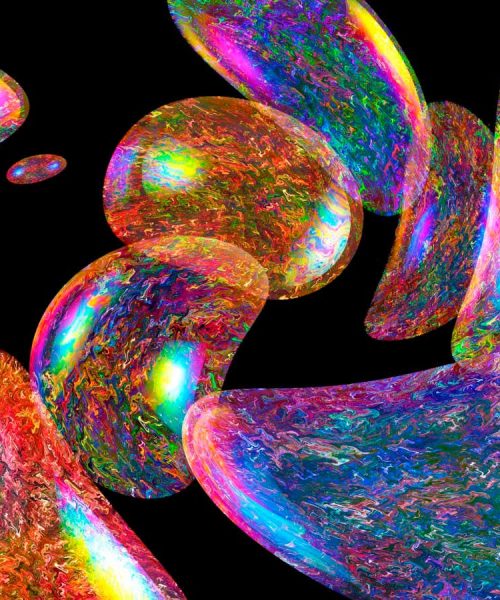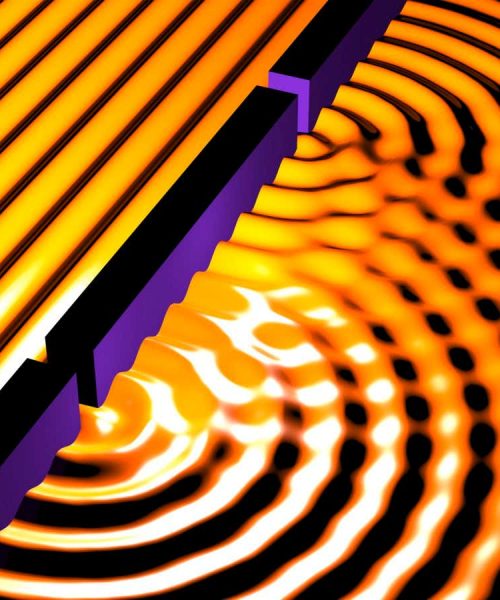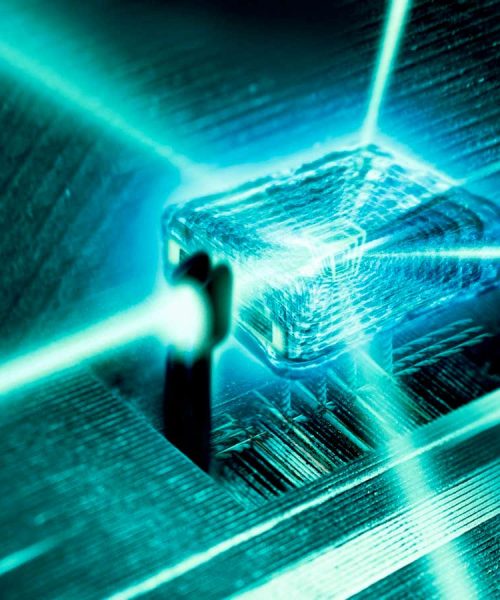
Peter Higgs at the Science Museum in London in 2013
Photo by Andy Rain/EPA/Shutterstock
Peter Higgs lived a singular life. He developed a physics theory that stood a chance of radically advancing our understanding of the universe, and lived to see generations of experimentalists chase after and eventually triumphantly corroborate his work in the lab. He died in his home at age 94.
“Without Higgs’s work, we wouldn’t understand why there are atoms. Some pretty basic features of our world would not be understandable,” says John Ellis at King’s College London.
Advertisement
Higgs started that work at the University of Edinburgh in the UK in the 1960s. He was thinking about a branch of physics called quantum field theory, and in July of 1964, he took about a week to write a short paper on the topic. Physics Letters accepted the study but rejected Higgs’s more detailed follow-up work just a week later. Even though Physical Review Letters eventually published a revised version of the second paper, it received no fanfare and remained overlooked for years.
Ironically, these papers contained a key ingredient that was sorely lacking from the theory of all particles in the universe: the reason why they have mass.
Almost all known particles need some mass in order to bind to each other and form the structures, like atoms, that comprise our physical world. But physicists understand all particles as excitations of invisible fields that permeate everything – electrons, for example, are excitations of the electromagnetic field – and even the best theories at the time could not explain where these masses come from.
Higgs theorised that particles would acquire mass by interacting with a new type of field. That field had a very special excitation of its own, another particle called the Higgs boson. The Higgs field solved a huge question in theoretical particle physics, and the Higgs boson was a tantalising target that experimentalists could hunt for in order to tie theory to reality.
“If you remove everything from the vacuum, all matter or quantum fluctuations, all electromagnetic stuff, all gravity, you will be left with the Higgs field,” says Frank Close at the University of Oxford. “And we need that just like a goldfish needs water. It stabilises empty space.”
Working independently from Higgs, physicists François Englert and Robert Brout reached the same conclusion, also in 1964.
However, according to Close, who wrote a biography of Higgs in 2022, Higgs did not necessarily set out to write a groundbreaking paper. He simply followed a line of rigorous and often solitary scholarship, which led him to worry deeply about what seemed to be a technical issue that plagued quantum field theory. Other physicists had previously resolved a similar issue in systems with less cosmic implications, such as perfect conductors of electricity. Higgs figured out how to generalise their mathematics to all of particle physics.
But quantum field theory was unfashionable at the time, and when he lectured about his work at prestigious institutions like Harvard University in 1965, Higgs was largely met with scepticism, says Ellis. In 1976, Ellis and two of his colleagues at the CERN particle physics laboratory in Geneva, Switzerland, wrote a paper drawing attention to how the Higgs boson could show up in some experiments at the facility.
“No one really seemed to care, but to us, [the Higgs boson] was extremely important… And I was absolutely sure that the Higgs boson will be found,” says Dimitri Nanopoulos at Texas A&M University, who co-authored the paper. He was a very young researcher at the time, but that study was prescient about the future of particle physics. By 1984, views among physicists had shifted and they were eager to hunt for the Higgs boson. Leadership at CERN discussed building a new particle collider, in large part to help with the search.
That detector – the Large Hadron Collider (LHC) – found the Higgs boson in 2012. Within the LHC, researchers engineered a careful head-on collision of two incredibly fast protons, a crash capable of producing a Higgs boson. But the boson only lasts for less than a billionth of a billionth of a second before becoming a shower of other particles. Analysis of the collision’s wreckage showed those particles had come from a Higgs boson with such high certainty that the odds of it being a fluke were just 5 in 10 million.
Physicists around the world were rapturous, and Higgs and Englert shared a Nobel prize in physics the next year.
Close and Ellis both say that even before the LHC started to operate, other colliders had obtained less direct evidence vindicating Higgs’s theory, such as very precise measurements of masses of other exotic particles. Higgs was aware of these findings, as he explained to New Scientist in 2012: “I had faith in the theory behind the mechanism as other features of it were being verified in great detail at successive colliders. It would have been very surprising if the remaining piece of the jigsaw wasn’t there.”
Still, the direct search for the Higgs boson at the LHC had a strong influence on particle physics. It bolstered efforts to build new infrastructure like accelerators, and cemented the large collaborations that manage this equipment as a standard approach for conducting scientific research.
Since 2012, the LHC has been upgraded to produce even more energetic collisions, and researchers have set out to answer lingering questions about not only particles, including the Higgs boson itself, but also dark energy and dark matter, the unexplained phenomena that make up most of the universe.
Higgs himself was interested in some of those questions and kept working on them even after he retired in 1996. “The machine at Geneva – which was not designed just to discover the Higgs boson, though sometimes you get that impression – is expected to go on and improve our understanding of the links between particle physics and what happened in the early universe,” he told New Scientist in 2013.
Finding the Higgs boson was the end of one chapter, but not the whole book, says Nanopoulos.
After his retirement, Higgs kept working on his own research. He was particularly interested in supersymmetry, which is a theory that posits the existence of heavy counterparts for every particle that we have detected already. Physicists who share this interest and want to find its experimental signatures hope that the LHC will discover dozens of new particles.
In addition to the Nobel prize, Higgs received several other accolades, including the Paul Dirac Medal and Prize, the Wolf Prize in Physics and the American Physical Society J. J. Sakurai Prize. In 1999, he turned down a knighthood, an act that fit his general rejection of fame. He did not want titles and was embarrassed by the media attention his work garnered over the years, particularly disliking the Higgs boson’s sensational nickname, the “God particle”.
The story of how Higgs even tried to evade the call from the Royal Swedish Academy of Sciences informing him of his Nobel win – by leaving his home without a cell phone – is well-known lore among physicists. Ellis also recalls that Higgs initially turned down the invitation to come to CERN for the official announcement of the discovery of his eponymous boson. But colleagues eventually convinced him to attend the festivities.
Close titled his biography of Higgs “Elusive”, which he says described both the man and the boson. Physicists widely agree that he was one of a kind and respected him for it.
Higgs died in his home in Edinburgh on 8 April after a short illness. He leaves behind two sons, a reinvigorated field of particle-seeking physicists and a clearer understanding of the forces that hold the universe together.
Topics:





